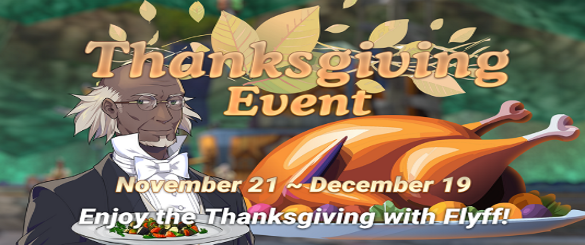Basic HnR Ranger Guide
Table of Contents
Introduction
Do you want to become a powerful Hit and Run Ranger? Then this guide is for you! Before we dive in, a few notes about this guide: it’s primarily aimed at free-to-play players, meaning we assume no use of consumables, minimal upgrades, and no access to high-level super support Ringmasters with +40 DEX buffs or anything that would make you extremely overpowered at lower levels. We’re working with the standard scenario where you don’t have these advantages. Additionally, this guide assumes you’re already a level 60 Acrobat. If you need help with leveling as an Acrobat, we have a guide available.
Stat Points: "H"
First up are the stat points. The Ranger’s stats are very straightforward, especially for Hit and Run. You’ll want to go full DEX. The goal is to maximize your damage output, as Hit and Run is all about dealing massive damage while avoiding being hit. Since the focus is on avoiding damage rather than tanking it, there’s no need for defensive stats—just stack DEX for maximum damage.
Skill Points: "K"
When it comes to Ranger skills, things get a bit more complex compared to other classes. Much like Elementors, many skills are relevant for Hit and Run Rangers, including some Acrobat skills. Let’s break it down:
- Fast Walker: This is essential for you, serving as the basic tool for Hit and Run Rangers. It boosts your speed by 30% for 25 seconds with a 25-second cooldown, meaning you can keep it active continuously. Without this skill, Hit and Run simply doesn’t work effectively.
- Dark Illusion: Not very important for PvE; it’s more of an emergency skill if you make a mistake. You’ll hardly ever use it while leveling.
- Perfect Block (self buff):: This is nice to have, providing extra block rate, especially at lower levels where you’re far from the maximum 75% block rate in Flyff Universe. It’s helpful if you do get hit, giving you a better chance to survive minor errors.
- Bow Mastery (auto buff): Increases your damage +100. It’s a basic damage boost that’s essential for Rangers.
- Arrow Rain: Unlocked at level 20, this AoE skill isn’t something you’ll use frequently, but it can be incorporated into your rotation. If you do use it, make sure to max it out.
Now, let’s get to the skills that really matter:
- Ice Arrow: An AoE attack scaling with DEX (and strangely, INT), it slows all monsters hit by 30% with a 100% success rate. This is critical for controlling mobs while you execute your Hit and Run strategy.
- Flame Arrow: Your most important skill, dealing AoE damage over time in a fixed area. It’s your main damage dealer, and you’ll want to spam it whenever it’s off cooldown. Flame Arrow’s damage can be influenced by your weapon’s element, making it extremely versatile.
- Critical Shot (self Buff): Not strictly necessary for Hit and Run Rangers, but it doesn’t hurt to use. It gives +20% Critical Chance and enhances block penetration +10%. It’s useful when pulling mobs with auto-attacks, but it’s not a priority skill.
- Piercing Arrow: Another AoE skill, though we personally don’t find it very effective. Compared to Flame Arrow or even Arrow Rain, Piercing Arrow lacks the same damage output. It’s not essential for Hit and Run, but you can use it if you prefer.
- Nature (self Buff): An important skill unlocked at level 70, it increases your bow range by 20%, allowing you to attack mobs from even further away—very useful for Hit and Run tactics.
- Boomburst: Unlocked at level 100, this AoE skill deals minimal damage but has a utility effect of knocking enemies into the air. This gives you more time to reapply skills like Fast Walker or Ice Arrow, boosting your overall damage output.
Skill you don't necessarily need.
As a Ranger, you shouldn’t have significant issues with skill points. You should have enough points for everything important. If you do find yourself short, here’s what you can deprioritize:
- Dark Illusion: Only level it as high as needed.
- Low-Level Acrobat Skills: Junk Arrow, Silent Shot, Aim Shot, and Auto Shot should only be leveled up as needed for other Skills.
- Poison Arrow and Critical Shot: Only level these as high as necessary.
- Piercing Arrow: We’d recommend skipping this one altogether, especially early on.
Focus on maxing Ice Arrow, Flame Arrow, Nature, and Boomburst. By level 100, you should be able to max everything important and still have skill points to spare.
Cloak
The cloak you’ll want is, logically, a DEX cloak. Since we’re going full DEX and aiming to maximize damage, you’ll want as much DEX as possible. Therefore, the Cloak of Precision (+8 DEX cloak) is the ideal choice.
Pet
Choosing the right pet for a Hit and Run Ranger is a bit tricky. Since your build revolves around DEX, there are several pets you could theoretically choose. The Jackalope (Rabbit) gives you DEX, making it a solid choice. Alternatively, the Dragon offers increased Attack, which is also viable. You could even opt for the Nightmare if you want some additional HP, especially if you’re leaning towards a more battle-oriented Hit and Run style.
There’s no official term for this, but we can show you later, where an HP pet could be advantageous for risk-takers. However, the standard Hit and Run Ranger will likely go for the DEX pet, which also comes with a helpful grace effect. Using a DEX pet like the Jackalope increases your DEX, boosting your damage. The Jackalope’s grace effect gives you additional speed, which is incredibly useful for Hit and Run Rangers. However, using grace pets long-term can be expensive, so we recommend sticking to the Jackalope for its DEX boost rather than using it for gracing.
Jewelry
For jewelry, the choice is straightforward. Opt for DEX rings (Dextion+1), additional damage earrings (Mighteer or Demol Earring), and an HP necklace. We personally recommend a Puran Necklace, but at lower levels, you might consider an MP necklace if you’re struggling with MP consumption. That said, it’s not strictly necessary since the skills aren’t overly expensive in terms of MP. However, during the early stages, you might find an MP necklace useful, so choose based on your preference.
Element, Skill Damage, and Sockets
When it comes to weapon upgrades, these are crucial for Rangers. As mentioned earlier, you can boost your Flame Arrow damage through elemental upgrades. A Fire +1 element on your weapon is sufficient—you don’t need to upgrade beyond Fire +1. Fire +1 is enough, which is great because it saves you a lot of money while still significantly boosting your damage. (Weapon elements +x don’t boost your skills, only for some skills ones like for flame arrow)
Damage test difference were substantial—around a 10% increase by simply adding Fire +1 to your weapon. For instance, damage with no element was 8,600, while with Fire +1, it was 9,400. That’s an impressive 10% damage boost, which is fantastic considering it’s such a simple upgrade. So, always go for Fire +1 on your weapon for any skill that uses Flame Arrow.
As for sockets, you’ll generally want to prioritize damage. You can choose between DEX cards (Electric Card) and Skill Damage cards (Volt Card). We’d personally recommend DEX cards because they’re likely much cheaper and provide excellent value for money. Although Volt cards aren’t overly expensive, DEX cards are probably among the cheapest in the game, so you shouldn’t have any trouble affording them. Therefore, use Electric Cards (DEX) to boost your damage. While sockets aren’t as crucial at low levels, if you do decide to use them, definitely go for DEX cards. However, if Volt cards happen to be cheaper, those are also a good option.
For skill damage (with Scroll of Weapon Bonus), prioritize Flame Arrow. Alternatively, you can go with Arrow Rain. Flame Arrow should be your first choice since it has a short cooldown and will be used much more frequently. If you already have skill damage for Ice Arrow on your weapon, that’s also fine, as it’s another skill you’ll be using often. If, for some reason, you don’t use Arrow Rain, then definitely don’t go for that. One of these three—Arrow Rain, Flame Arrow, or Ice Arrow—should be on your weapon. Anything else would be suboptimal, as the other skills are used much less frequently.
Essential Assist/Ringmaster Buffs for Hit-and-Run Rangers
When it comes to buffs, Hit-and-Run (HnR) Rangers have slightly different priorities compared to other classes. The most crucial buff for an HnR Ranger is Mental Sign at max level. Additionally, Quick Step is extremely important. While Quick Step might be considered a luxury for most other classes, it’s essential for HnR Rangers. It allows you to move faster between monsters and overall, which significantly boosts your leveling speed by saving time during movement.
For HnR Rangers, Quick Step should be prioritized above most other buffs, perhaps only second to Mental Sign, because it’s vital to be as fast as possible. By level 60, you should have Quick Step maxed out. After that, you have more flexibility in choosing your buffs. We would also recommend Haste because Rangers can have attack speed issues early on. If that’s not a concern, feel free to skip it. Cannon Ball is also important for additional damage, and Beef Up slightly increases your damage as well.
Don’t forget to buff your Ranger with Mental Sign as it enhances some of your skills, like Flame Arrow, by a small margin. This increase might not be significant, but every bit helps. So, the most beneficial buffs for maximizing your damage are Quick Step, Mental Sign, Haste, Cannon Ball, and Beef Up. Accuracy, Cats Reflex, Heap Up, and Patience are not as essential since you ideally want to avoid getting hit. These buffs become relevant only if you do get hit.
For buffs from the Ringmaster skill set, the must-haves are Protect, Spirit Fortune, and Geburah Tiphreth (GT). These are self-explanatory and should always be used.
Weapons and Upgrades
We’ve already discussed weapon awakenings and the importance of Flame Arrow damage. Now, let’s dive into the best weapons and upgrades for HnR Rangers. Although the Guardian Bow might seem like an obvious choice due to its high Attack value, it’s not necessarily essential. The Guardian Bow offers increased HP and Critical chance, which aren’t particularly useful for an HnR Ranger. However, because it often comes with good skill awakenings, like +23~25 Flame Arrow damage, it remains a popular choice. Even though the difference in Attack between the Guardian Bow and other weapons isn’t substantial, the Guardian Bow is still a solid option for most players.
If you’re looking for a cheaper alternative, the Roripol Bow is a great choice. Its Attack value differs only slightly from the Guardian Bow, and it provides +5 DEX and +10% attack speed. The attack speed bonus might not be critical, but the DEX boost directly enhances your damage. Though +5 DEX might seem small, it’s better than nothing. The key is to ensure that your Roripol Bow has the necessary skill damage, particularly for Flame Arrow.
Another option is any NPC Bow with Flame Arrow damage. The NPC bow must be at least level 60 to have this effect. After this, weapon choices become more straightforward but also a bit mundane. At level 70, the best choice is the Bow of Iblis as it offers +10 DEX and +10% skill damage, making it the only bow that provides a skill damage bonus. However, it’s rare and expensive, especially with good awakenings, which might not make it the best choice for beginners.
For a more versatile option, consider the Historic Bow (Level 75). Although it only gives +10 DEX (Critical Damage+10% is not relevant for HnR), it’s easier to find with good Flame Arrow damage awakenings, and it’s more versatile for different situations, like giant hunting.
At higher levels, the Angel Bow (Level 90) becomes appealing, offering +15 DEX and +20% HP. This fits well an agressive playstyle, as the extra HP is helpful while still boosting damage. While the increase from +10 to +15 DEX might seem minor, it’s still valuable. The Angel Bow is often reasonably priced and can be found with good skill awakenings.
Unfortunately, beyond these options, there aren’t many bows that provide significant skill damage or DEX bonuses. Most high-level bows focus on Attack or tanking stats. For those who continue with HnR, the Bloody Bow (Level 120) is a viable choice, providing +10% Attack and a bit of sustain through HP steal +0.8%, though it’s less effective than +10% skill damage.
Finally, the best option is Nemo’s Fury (Level 150). This bow offers the highest Attack value and Attack +10~15%, (Critical Chance and Dritical damage again aren’t important for HnR) and a special skill, Water Bomb +5~9%, which triggers additional AOE damage based on your attributes. This skill can be activated alongside your main skills like Flame Arrow, Arrow Rain, and Ice Arrow, making it a powerful tool for enhancing your overall damage output.
Is Hit-and-Run (HnR) Ranger over Level 120 Still Viable?
As you reach level 120, the choice of bow may no longer matter as much, and there’s a simple reason for this: at level 120, you should probably stop playing as a Hit-and-Run Ranger. The issue with the HnR Ranger is that the class gradually weakens as you progress in the game. At level 60, the HnR Ranger, or Rangers in general, are among the strongest classes. They gain access to a variety of powerful skills that open up new playstyles like AOE facetanking, Hit-and-Run, and even stronger one-on-one combat.
At level 60, Rangers are particularly strong because they get most of their key skills at this stage, whereas other classes usually unlock their crucial AOE and other important skills at level 70. This gives Rangers an early advantage. However, as you level up, the class begins to decline in power, culminating at level 120.
This decline is due to monsters having increasingly higher HP, while the damage output of the HnR Ranger doesn’t scale proportionately. Although you do gain more DEX over time, it’s not enough to keep up with the monsters’ HP increase. The real issue arises when monsters start having 150,000 to 200,000 HP, and you can no longer kill them within the 28 seconds you have before they reset and run away.
Therefore, our personal recommendation is to switch to facetank mode at level 120 if you want to continue playing. You can stick with DEX but may need to overhaul your equipment. we’ve a guide on this. For those interested in 1-vs-1 playstyle, we also suggest waiting until level 120. At this level, you’ll have access to the Bloody Bow, which provides a significant damage boost for one-on-one encounters, along with a handy HP steal effect.
It’s possible to continue playing as a dedicated HnR Ranger beyond level 120, but we don’t recommend it. It’s got tested at Mammoths, and while it’s doable, it’s not particularly enjoyable, especially when compared to other classes like Elementors. However, if you’re committed to being an HnR Ranger, you can keep going—but it’s not advisable.
Set Upgrades
Now, let’s talk about sets and upgrades. Before diving into the sets, here’s a brief overview of upgrades. Upgrading your gear to +5 or +6 is generally sufficient before level 105. For socketing, three Attack sockets (Lightning Cards 4%) are more than enough. We strongly recommend buying your equipment rather than upgrading it yourself, as self-upgrading tends to be more expensive. While you can upgrade to +5 or +6 on your own, socketing can get costly, so it’s often better to buy pre-socketed gear. Three sockets will suffice until level 105.
After level 105, you’ll want to upgrade your gear to +8 or aim for 16% bonuses. With higher levels comes more money, so you can afford to invest in better gear. However, as an HnR Ranger, you can easily reach level 120 with just a +5 set and three sockets.
Optimal Set Combinations
This is where it gets interesting. The best possible setup for a level 60 HnR Ranger is a mix-and-match approach with two pieces of the Clockworks (CW) Rorend/Rorient Set (preferably the Gauntlets and Suit, as they offer the highest defense and are likely the cheapest) and two pieces of the Level 45 Cruiser/Hyper Set (Helm and Boots). The Rorend/Rorient Set gives you +7 DEX, boosting your damage, while the Cruiser Set provides +75 Attack. This combination creates the highest damage output for HnR Rangers at this level.
That said, you don’t necessarily have to go this route. You can opt for a full Rorend/Rorient Set, or full Cruiser Set. The differences are minor, but if you’re looking for the best damage setup, go for the two-piece Rorend/Rorient and two-piece Cruiser/Hyper combo.
When you reach level 75, this setup can be discarded because you’ll gain access to the best set for HnR Rangers: Oska/Okas Set. This set gives you +10 DEX, +10% skill damage, and +15% HP, covering all the stats you need, although the HP bonus might not be as essential. The Okas/Osker set is the ultimate gear for skill-based Rangers and HnR Rangers and will carry you all the way to level 120.
If you decide to continue as an HnR Ranger at level 120, you’ll want to switch to the Acer/Acris Set. While it may seem like a facetank set. It’s offering PvE damage +15%, attack +5%, and block rate +10%. It also provides 25% HP and damage reduction +15%, which, although not necessary, provide an extra safety net for when you make mistakes.
At level 150, the best option would be to switch to the Hainure/Hanira Set, which offers similar upgraded stats to the Acer Set. However, we doubt many of you will still be playing as an HnR Ranger at level 150. But if you do reach level 150 as an HnR Ranger, the Hainure/Hanira Set would be your go-to choice.
Monster Focus Timer
Flyff Universe experienced one of its most significant changes in July 2022 with the introduction of the Monster Focus Timer adjustment, commonly known as the Hit-and-Run (HnR) Nerf. On July 5, 2022—just three weeks after the game’s release—HnR mechanics were heavily nerfed. This change was in response to complaints that HnR was too easy and overpowered. While it was an enjoyable and effective strategy, it was ultimately deemed too strong and was adjusted accordingly.
The Monster Focus Timer dictates how long monsters will chase you without landing a hit, and it now scales based on the number of monsters targeting the same player. Here’s how it works:
- 1-3 Monsters: If you’re fighting 1 to 3 monsters, they will chase you for 3 minutes before losing focus and running away.
- 4-7 Monsters: With 4 to 7 monsters, you only have 80 seconds (1 minute 20 seconds) before they lose interest.
- 8-13 Monsters: If you pull between 8 and 13 monsters, you get 50 seconds to kill them before they start fleeing.
- 14+ Monsters: Once you reach 14 or more monsters, you have just 28 seconds to defeat them.
The 28-second timer for 14+ monsters was the most significant nerf and has become a key point of strategy for HnR players. This timer requires you to deal damage quickly and develop an intuitive sense of how much damage you can output within that time frame.
For those new to HnR, understanding these timers is crucial. You need to keep them in mind to avoid the frustration of watching your mobs flee unexpectedly. The timers are always running in the background, so be aware of them to prevent mobs from escaping mid-combat.
Piercing Arrow: A Skill Analysis
Now, let’s talk about Piercing Arrow and why we are not a big fan of it, especially in a Hit-and-Run context.
While Piercing Arrow has decent DEX scaling and a relatively high base damage, it surprisingly doesn’t deal much damage in practice. For example, it deals around 12,600 damage, whereas Ice Arrow, which has worse scaling, deals 12,400 damage. Despite being theoretically stronger on paper, Piercing Arrow performs similarly to a weaker-looking skill like Ice Arrow.
Moreover, the main source of your damage is Flame Arrow, which significantly outperforms Piercing Arrow, especially due to its damage-over-time effect. Even Arrow Rain, when properly placed, can deal more damage than Piercing Arrow, particularly in combination with other skills like Boomburst.
Given these factors, there’s simply no room for Piercing Arrow in your playstyle rotation. If there were longer cooldowns, it might be worth considering, but as it stands, it’s an unnecessary skill for my playstyle. For these reasons, Piercing Arrow has always been an unimportant skill in my arsenal.
HnR Ranger playstyle
Let’s finally dive into a demonstration of the playstyle. First, a quick tip: If you’re playing a Hit-and-Run (HnR) class, having a speed set is a huge advantage. If you can afford it, invest in the best speed set possible—10% speed is ideal, but 8% is also sufficient. We don’t want you to overspend, but as always, the better the gear, the smoother your experience. Even a modest 2% speed set can make a noticeable difference.
Pulling Mobs and Managing Hits
The core of this strategy is simple: pull mobs primarily using auto-attacks. A key reason for this is that Rangers typically have a high block rate, so taking one or two hits is rarely fatal. Factors like monster type and your specific gear will influence this, but generally, with Angel Bow’s 20% HP boost and additional HP from equipment, a few hits aren’t a problem. You can often block or parry attacks, so I don’t feel the need to dodge every aggro hit as if you were a fragile Elementor. This is a matter of personal playstyle, and while some players might prefer constant dodging, most player always played this.
Skill Rotation and Timing
Now, let’s move on to the core playstyle. The skills you’ll need include Nature, Perfect Block (though this is less crucial), and Fast Walker. Start by pulling mobs with auto-attacks, and either allow them to hit you or dodge them, depending on your comfort level. Always keep an eye on your character to avoid getting surrounded by too many mobs.
Once you’ve gathered a decent group of monsters, the goal is to group them together as tightly as possible. Then, use Ice Arrow to slow them down. After that, reactivate Fast Walker if it has worn off, and then use Flame Arrow. Follow it up with Boomburst and Arrow Rain to maximize damage over time (DoT). The ideal combo is to slow the mobs with Ice Arrow, hit them with Flame Arrow, immediately use Boomburst, and then cast Arrow Rain. This ensures the monsters stay in the DoT fields of both Flame Arrow and Arrow Rain.
As you might have noticed, Flame Arrow is your primary damage dealer, even more so than Piercing Arrow, which is why Piercing Arrow is generally not included in your rotation. You’ll find that Flame Arrow, with its quick cooldown and high damage output, is your go-to skill, even if the mobs have water resistance.
Pre-Level 100 Strategy
Before reaching level 100, your strategy remains mostly the same, minus Boomburst. Slow the mobs with Ice Arrow, then alternate between Flame Arrow and Ice Arrow, using Fast Walker to stay ahead of the group. The key is to keep the mobs slowed and use Flame Arrow as often as possible, as this is where most of your damage will come from.
Once you hit level 100, Boomburst becomes available, allowing you to add Arrow Rain into your rotation. But even before that, Flame Arrow should be your main focus. The short 3-second cooldown on Flame Arrow means you’ll rarely have time to use other skills, which is why Piercing Arrow isn’t very useful.
Source: The Guide was originally explained by Spielestyler in his YouTube video in German.
Views: 484










